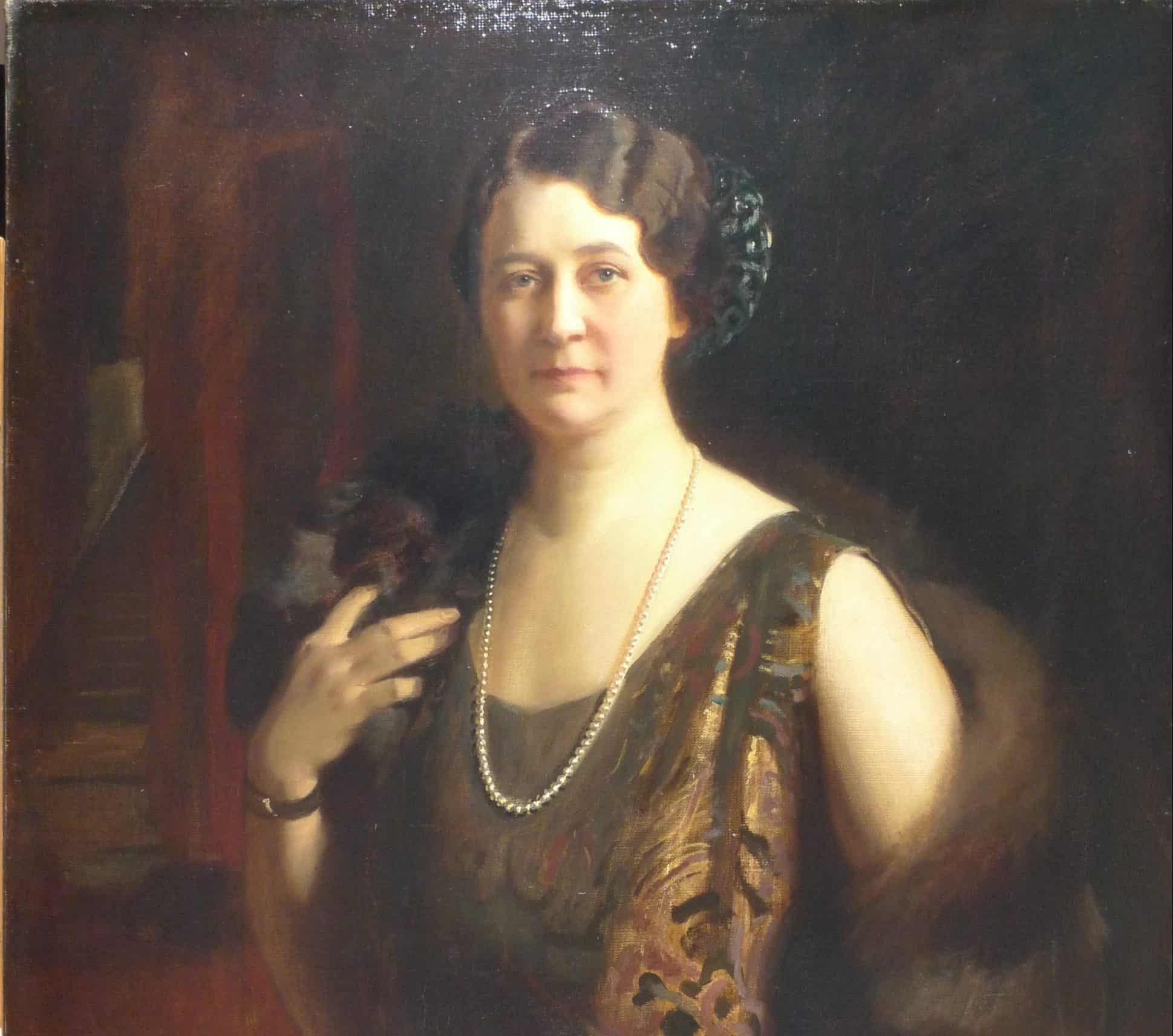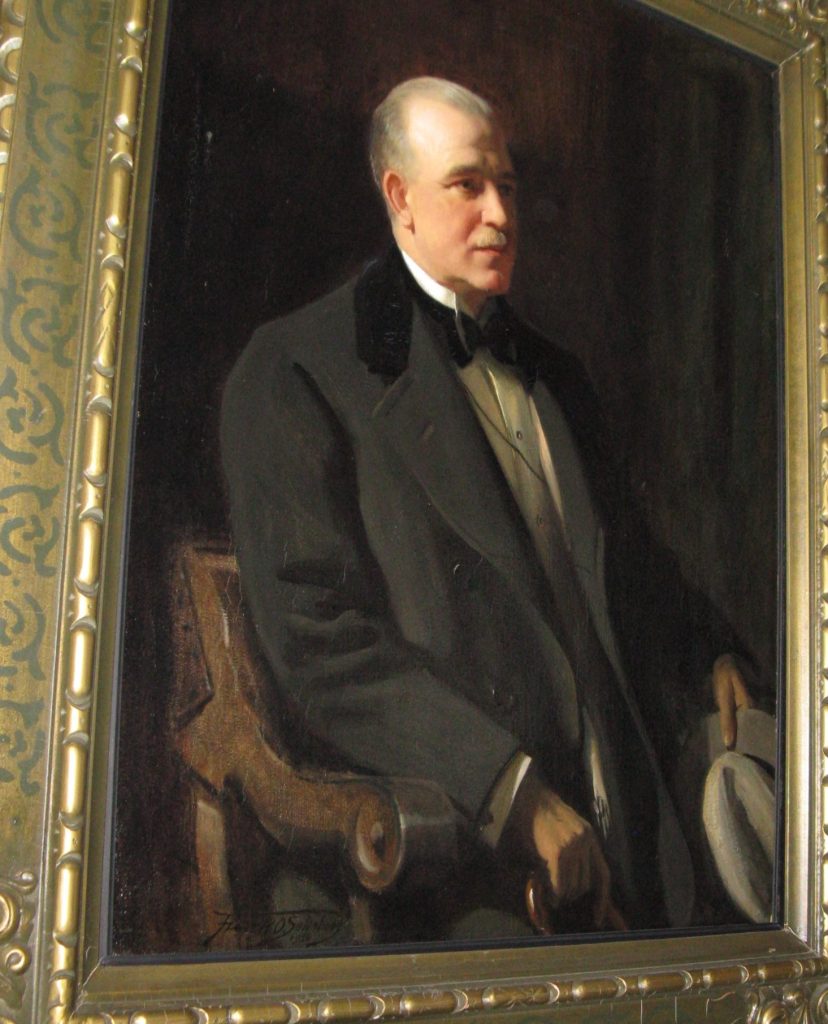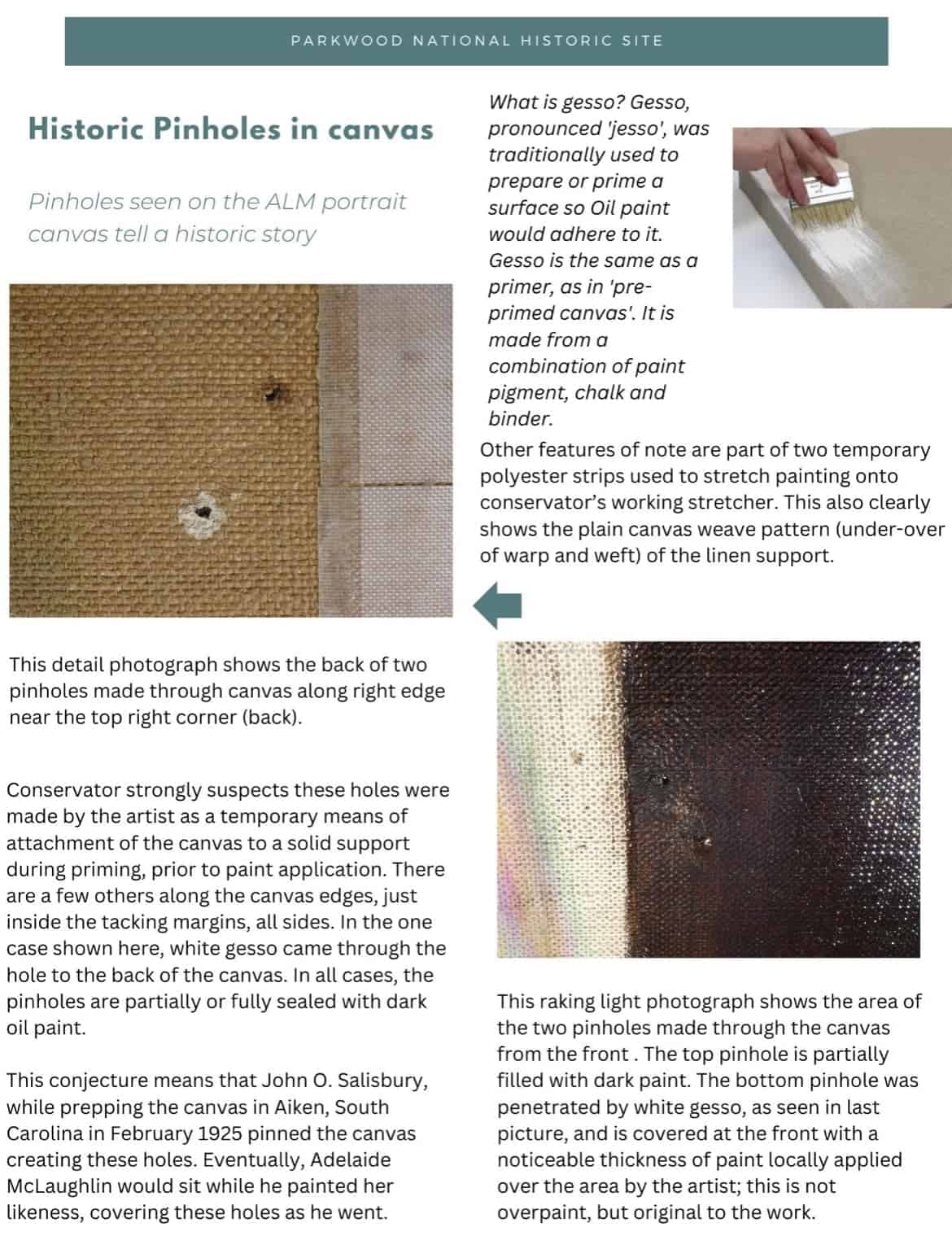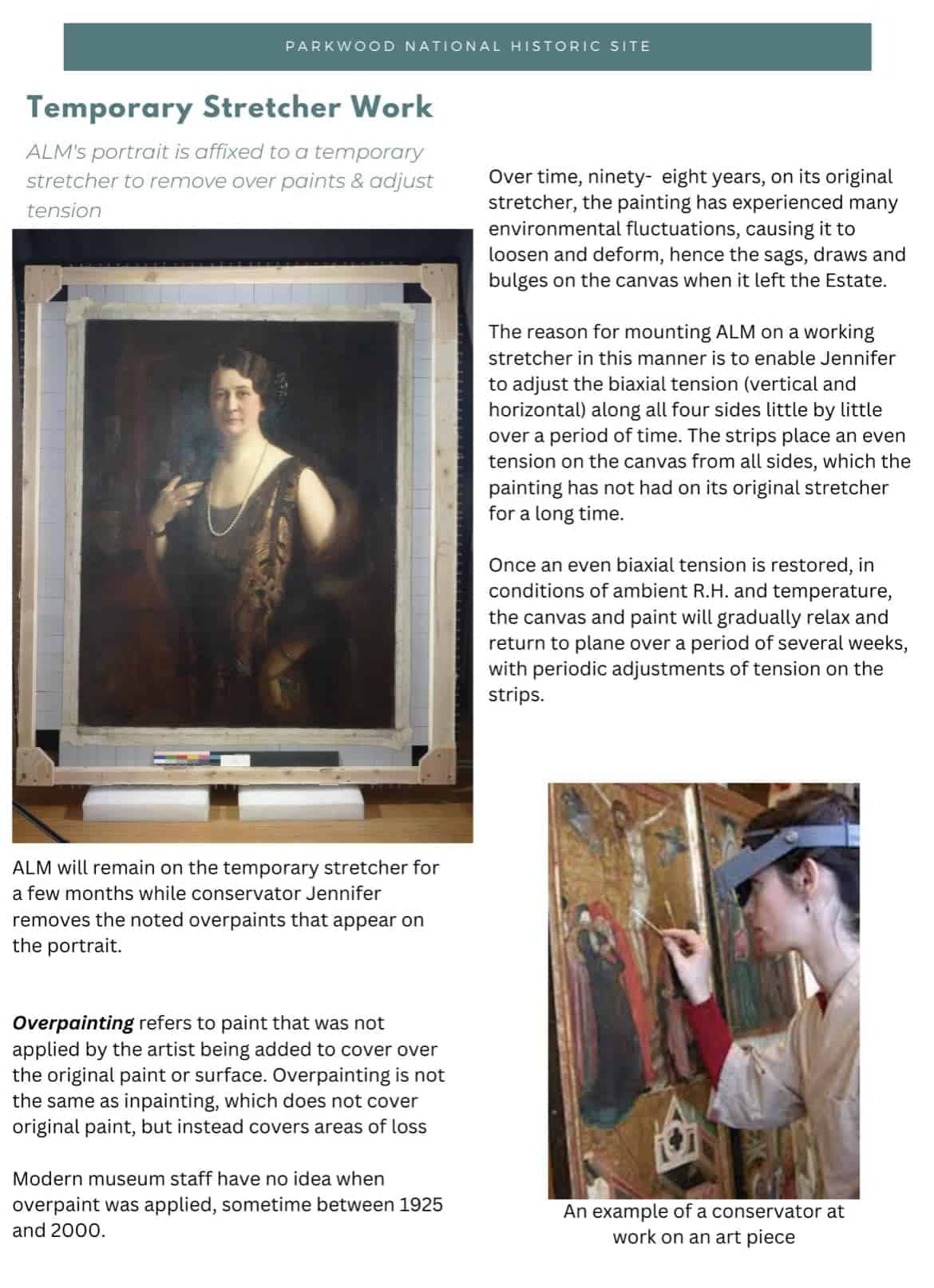‘Ghosting’ on the walls of Oshawa’s Parkwood as the family portraits head out for repairs and TLC
Published April 26, 2023 at 9:07 am

There is a bit of an empty feeling walking into the dining room at Parkwood Estates in Oshawa and if you weren’t sure why, the blank spaces on the walls where the portraits of the McLaughlin family once hung, gazing down stoically (as portraits do) at the parade of friends, servants and dignitaries and, since 1989, museum visitors that wandered through their domain.
The portraits of General Motors of Canada founder Sam McLaughlin, his wife Adelaide – a powerhouse of a woman in her own right – and four of their five daughters have hung in that room for nearly a century since they were painted by John O. Salisbury at the McLaughlin’s summer home in Aiken, South Carolina in 1925.
The youngest McLaughlin, Eleanor (known as ‘Billie’) was away at finishing school at the time. Her portrait was done in 1938 by Dorothy Austin Bruno.
All seven portraits are gone from their familiar spots on the dining room walls but fear not of an elaborate art heist or some other nefarious scheme to erase Oshawa’s history. The paintings are out for repair, as age catches up with everybody and everything, including oil paintings.
“It’s sad to have the family portraits missing from the dining room walls at the moment, but once they are back, conserved, they’ll be ready to welcome guests for another 100 years,” said Parkwood curator Samantha George.
Parkwood is using two different specialists, known as conservators, to touch up, and in some cases, repair damage to the portraits acquired over the years. Jennifer Cheney of Toronto has been tasked with working on the canvases while Oshawa’s Miriam Harris is taking care of the frames.
All seven portraits went out last year and with each conservator working on one painting at a time – “it’s long, tedious work,” George said – and it will be several years before the project is complete.
In the meantime George and her team made the conscious decision not to replace the paintings with substitute art in their absence. “We didn’t replace them at all, so there is ‘ghosting’ on the walls,” she said. “It gives us the opportunity to talk about preservation and highlight to visitors the stories behind the paintings.”
“We kinda describe it as they’re off to their spa treatments.”
Before repairs could even begin Cheney and Harris were busy in the dining room in early 2022 taking colour rendering photographs to capture Parkwood’s light levels and environment to make sure that when the portraits get their treatments the conservators are seeing the colours faithfully.
Once that was done the portraits were separated from their frames and sent off to their new, albeit temporary homes with Cheney and Harris.
“Conservation treatment reports and records become part of an artefacts story,” George explained. “These are filed for future Parkwood staff to understand what was done to artefacts in 2022, becoming part of the artefacts’ biography.”
Small tears, pinholes in the canvas and oozing goo discovered betwixt canvas and frame were some of the issues uncovered during the initial assessment of the portraits of Sam and Adelaide, the first two portraits on the conservators’ agendas, making their jobs far from easy.
“Words like puncture, glue or glue-paste, and missing are not curatorial ideals, but something that we deal with and work with the conservator to remedy, when we can,” George noted.

Work began on Sam’s portrait first and once the canvas was removed from the frame it was discovered a section of lining fabric was missing and under UV light Cheney noted paint loss and a short puncture to the right of Sam’s jacket lapel, likely occuring when the picture was removed from the wall. The hole went through the canvas but not through the lining.
Adelaide McLaughlin’s portrait was a little more challenging to repair, as this submission to the Parkwood Post explained:

If only that was all the conservators had to deal with …  For the conservators’ sake, let us hope restoration work on the portraits of the five McLaughlin daughters goes a little smoother.
For the conservators’ sake, let us hope restoration work on the portraits of the five McLaughlin daughters goes a little smoother.
Of course, portraits are not the only items in the estate that need some tender, loving care from time to time.
Parkwood has not had to source or collect artifacts for the collection because when it became a National Historic Site in 1989 the house was already full of items that belonged to the McLaughlin family when they lived here. As the estate is now more than 100 years old (it was completed in 1917), signs of time, gravity and wear and tear have begun to emerge.
It’s an extensive and expensive process to properly preserve the artifacts (proceeds from movie and television production go a long way in paying the bills here), and the Parkwood team make every attempt to conserve the collections, architecture and heritage assets of Parkwood through the work of trained conservators.
It’s not just the artifacts: roofs, windows, wiring, fire, and safety systems all need repairs and upgrades while temperature, humidity levels and air quality, control light and UV are all carefully monitored.
“We intervene with artefacts and architectural finishes as little as possible, preserving them in their current situations and conditions,” George said. “When we need to intervene, we conserve, treating room finishes, painting and artwork, furniture, carpets, fabrics and lighting with minimal measures without altering the historic integrity of the artefact.”
“Preserving a site of the quality and importance as Parkwood has tremendous challenges but also tremendous rewards to Canada: a gift to the future and an opportunity to learn from the past.”
insauga's Editorial Standards and Policies advertising






